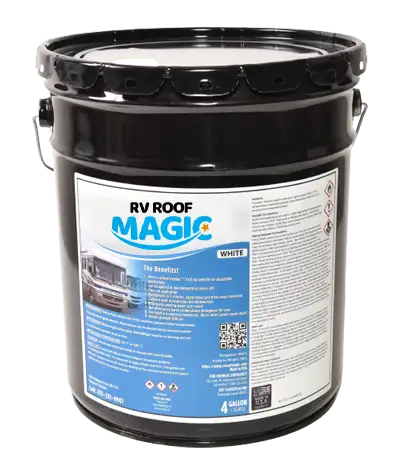Catalyst-Based Roof Coatings: Advantages Over Elastomerics and water based acrylic products
Introduction
Roof coatings play a vital role in protecting and prolonging the lifespan of roofs by providing a durable, weather-resistant barrier. Two popular types of roof coatings are catalyst-based coatings and elastomeric coatings and water based acrylics. While both offer benefits, catalyst-based roof coatings have several advantages that make them a superior choice for various roofing applications. In this article, we will delve into the reasons why catalyst-based roof coatings outperform elastomerics in terms of durability, longevity, and overall performance.
1. Enhanced Durability:
One of the primary advantages of solvent/catalyst-based roof coatings is their exceptional durability. With RvRoofMagic our proprietary solvent undergoes a unique chemical reaction resulting in a cross-linking process allowing our coatings to fuse itself to your existing roof while continuing to allow for significant flexibility and elongation (400% elongation and tensile strength of 1200 psi.) The cross-linking process creates a three-dimensional network that improves the coating’s resistance to physical damage, such as impact and abrasion. Unlike elastomeric coatings, which rely on their inherent flexibility, RvRoofMagic offers superior toughness, ensuring long-lasting protection against harsh weather conditions, foot traffic, and other environmental factors.
2. Extended Longevity:
Catalyst-based roof coatings exhibit excellent long-term performance, surpassing elastomeric coatings in terms of longevity. The cross-linking reaction in catalyst-based coatings forms a highly stable and chemically resistant film that resists degradation due to UV exposure, temperature fluctuations, and chemical exposure. This enhanced resistance to weathering ensures that the coating maintains its protective properties over an extended period, reducing the frequency of re-coating or repairs. In contrast, elastomeric coatings may experience premature aging, cracking, or fading, necessitating more frequent maintenance.
3. Temperature Stability:
Another key advantage of catalyst-based roof coatings is their superior temperature stability compared to elastomerics. Catalyst-based coatings can withstand a wide range of temperatures without compromising their protective properties. They have excellent resistance to thermal cycling, preventing the coating from expanding or contracting excessively with temperature fluctuations. This stability minimizes the risk of cracking, delamination, or blistering, ensuring continuous protection for the underlying roof substrate. Elastomeric coatings, while flexible, may experience fatigue and thermal stress, leading to decreased performance and potential damage under extreme temperature conditions.
4. Chemical Resistance:
Catalyst-based roof coatings offer enhanced chemical resistance, making them ideal for roofs exposed to various chemicals or pollutants. The cross-linked structure formed during the curing process provides a barrier against corrosive substances, such as acids, solvents, and industrial pollutants. Elastomeric coatings, on the other hand, may be susceptible to chemical attack, leading to degradation, discoloration, or loss of protective properties. The chemical resistance of catalyst-based coatings ensures long-term roof preservation, especially in industrial or heavily polluted environments.
5. Application Versatility:
Catalyst-based roof coatings provide greater versatility in terms of application methods and substrate compatibility. These coatings can be applied using various techniques, including spraying, rolling, or brushing, allowing for efficient and uniform coverage on different roof types and configurations. They adhere well to various substrates, including metal, concrete, modified bitumen, and single-ply membranes. Elastomeric coatings, while suitable for many applications, may have limitations in terms of compatibility and adhesion, requiring additional preparation or priming in certain cases.
Conclusion:
Catalyst-based roof coatings clearly offer significant advantages over elastomeric coatings when it comes to durability, longevity, temperature stability, chemical resistance, and application versatility. The cross-linking reaction in catalyst-based coatings forms a robust, long-lasting protective film that can withstand harsh environmental conditions and chemical exposure. For those seeking a superior roofing solution with extended lifespan and enhanced performance, catalyst-based roof coatings prove to be a more reliable and effective choice.





